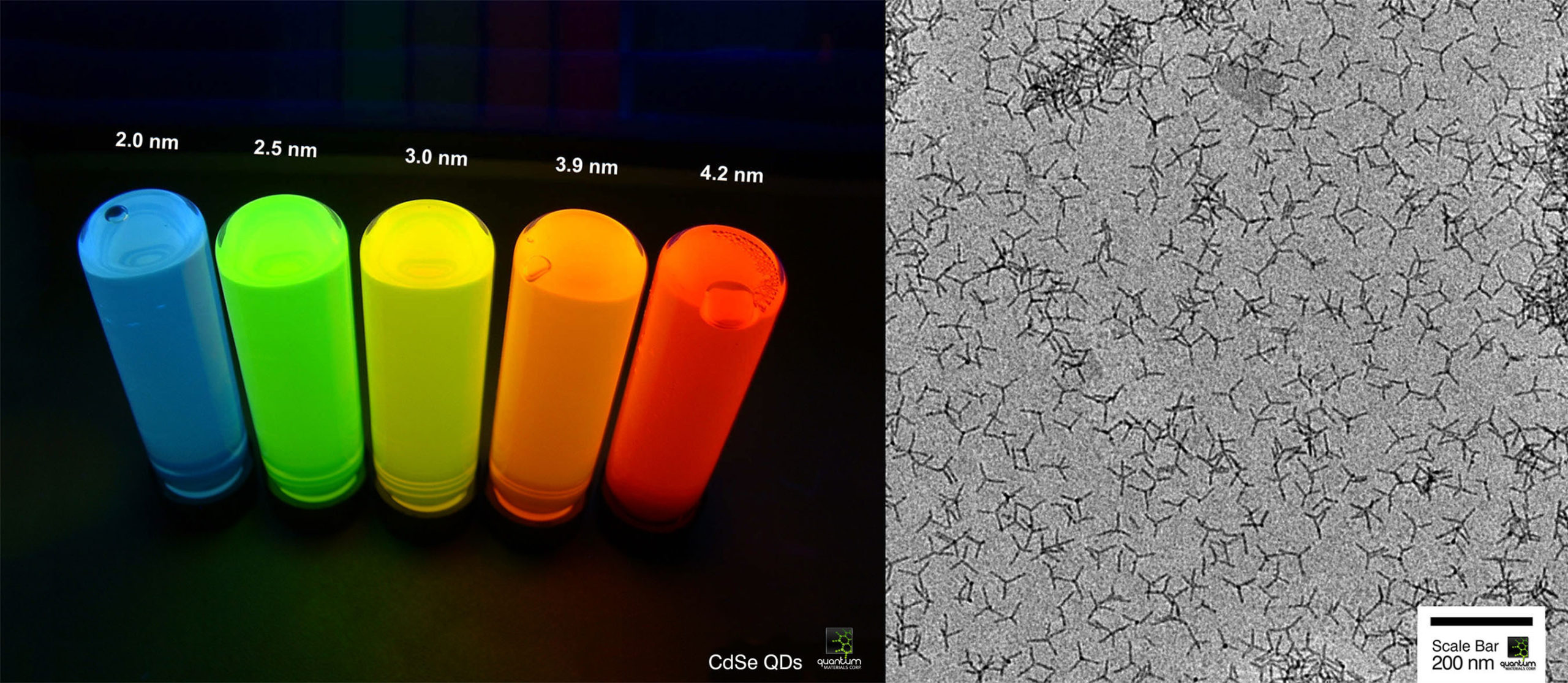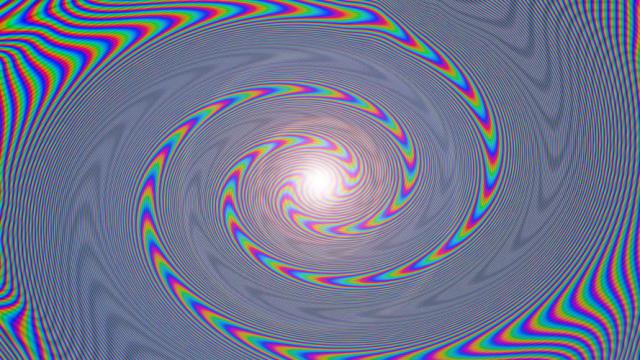It’s no secret that OLED televisions produce the best quality HDTV images on the market today. It’s also no secret that OLED sets are ludicrously, obscenely expensive compared to conventional LEDs. But what if there were a way to produce OLED-quality images at a fraction of their current price? Oh hey, there is.
They’re called quantum dots: nano-scale crystals that absorb light and re-emit it at a different, very specific, wavelength. They basically do what the hydrocarbon semiconductors in an OLED set do but without all the fancy organic chemistry. They could hold the key to creating plasma-quality colour saturation that never fades, brighter panels with increased contrast, and wider gamuts — all for not much more than today’s LCD sets.
How Your LCD TV Works and How It Could Work Better
It’s been a week of crazy new TVs thanks to CES, so let’s review some basics about conventional technology. Normal LED-LCD (referred to as just “LCD sets” from here on out) are actually pretty simply devices, consisting of three basic components: the white back light, the pixels (each of which is divided into three coloured subpixels: red, green, and blue), and the LCD shutter (which acts like a tiny set of Venetian blinds, opening and closing over the individual subpixels to create various hues). The back light shines light through each pixel on the screen to generate a coloured dot — all together, these coloured dots generate the image you see — and the colour of that dot depends on the position of the LCD shutter.
That is, if the LCD shutter closes over a pixel’s red and green subpixels, the light comes out blue; if the LCD shutter only closes over the green subpixel, the light comes out purple (the combination of blue and red light); if the shutter closes over all three, it produces black; if it remains fully open, you get white light. So by mixing the amount of light and combination of exposed sub-pixels, modern HDTVs can produce millions upon millions of different shades of colour, like Sony’s new super-thin 4k TV.
However, the process is by no means ideal. For one, it’s quite energy intensive. The back light never actually turns off, it’s simply blocked by the LCD shutter. Plus, the back light requires a whole support structure to affix it to the back of the screen which increases the TV’s weight, thickness, and production cost. OLEDs don’t need this back light, or the associated support structure, which is why they’re only a few millimeters thick and can offer a curved screen. But most importantly, the “white” back light isn’t actually a white light; it’s a blue diode coated with yellow phosphor to produce a rather dingy source light. And when the colour temperature of the back light is off, that affects the colour accuracy of the picture on the screen.
So What’s a Quantum Dot and How Does It Work?
Quantum dots (QD) address the colour temperature problem by effectively creating a better back light, leaving the rest of the LCD display system untouched. QD technology first got its start in the mid-1990s as a new form of infrared imaging devices. It wasn’t until the early 2000s that TV manufacturers warmed up to the idea of using the technology in their displays.

Left: Luminescent Vials show colour varies with QD size. Right: Tetrapod Quantum Dots by Electron Microscope. (PRNewsFoto/Quantum Materials Corporation)
Quantum dots are actually quite fascinating bits of engineering. Each dot is a semiconductor nanocrystal made from cadmium selenide and the colour it produces is entirely dependent on the specific size of the crystal — as you can see in the image above — rather than its chemical makeup. What’s really cool is that because the colour produced is determined by the physical properties of the crystal, the colour will never, ever vary. Those 4.2 nm quantum dots in the image above will produce that exact same shade of red tomorrow and 20 years from tomorrow because it’s not tinting a white source light — the quantum dots produce only that wavelength of red light when activated.
For a television screen, quantum dots are produced much like OLED sheets are — that is, they are sandwiched between two layers of organic semiconducting materials. As voltage is applied to one side of the sandwich, electrons move to fill their respective holes within the quantum dot layer and, in doing so, generate photons.
At their component level, display panels using quantum dot technology are a series of tubes (ed.: yisssssss!). The source light is generated by an uncoated blue LED which travels through a short tube filled with both red and green quantum dots. As the light activates the dots, they fluoresce, creating red and green light that combines with the blue source light and generates pure white light. This white light then acts as the standard back light for the rest of the LCD set as we discussed above.
Wait, So All This is About the Colour of My TV’s Back Light?
Yeah, pretty much. But this isn’t just some cheap gimmick like 3D. QD technology does offer a number of advantages over conventional LCD back lights and OLED screens as well.
First, QD-lit screens are way more energy efficient than conventional back lights because they operate like OLEDs. That is, there’s no always-on back light, each QD-lit pixel only turns on when it’s actually needed. This saves as much as 50 per cent of the energy needed to illuminate a similarly-sized LCD screen while being 50 to 100 times brighter and expanding the available colour gamut (the total theoretical number of colours a screen can produce) by up to 30 per cent. That’s on par with current OLED technology.
QD also holds a few advantages over OLED, especially in terms of manufacturing. Since QD is based on inorganic crystal structures rather than organic hydrocarbon chains, there’s very little chance of the QD components degrading over time. They’re also far less susceptible to humidity and oxidation than OLED components. What’s more, since cadmium selenide is soluble in both aqueous and non-aqueous solutions, it can easily be printed onto a huge range of polymer materials — including razor-thin flexible screens, luminescent wall and ceiling panels (ie, rather than using a light bulb, your entire ceiling may one day light up at the flick of the switch) and emissive displays (wherein the screen is its own back light). And since it’s only a single component of an existing display system, not an entirely new means of producing pixels, QD technology can be integrated into panels for far less than what OLED sheets cost to make.
But still, it’s just a frickin’ back light, right? How much better of a picture can it possibly produce just by cleaning up the colour temperature of the source light? Turns out, it makes a huge difference — just as much as OLED, without the astronomical price tag.
Picture: Frank L Junior/Shutterstock
